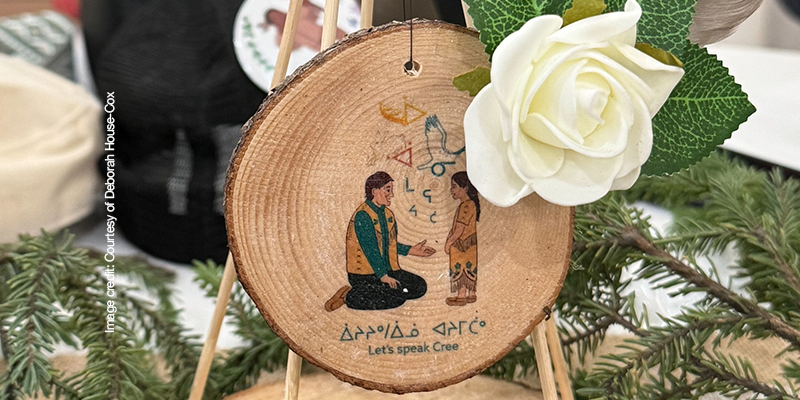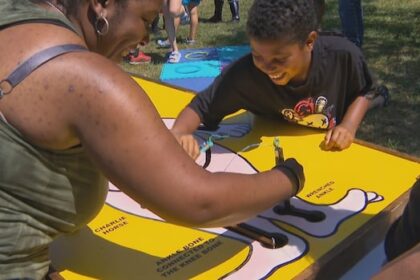The Cree School Board (CSB) is launching a Grade 1 Cree language pilot program for the new school year. Rolling out in Chisasibi, Mistissini, Waswanipi, Waskaganish, and Whapmagoostui, the initiative builds on earlier Cree language mentorship efforts in Pre-K and Kindergarten, emphasizing oral communication while integrating Cree into core subjects. Deborah House-Cox, Deputy Director General of Pedagogy, said the CSB acted after a 2019-2022 study showed Cree youth were rapidly losing their mother tongue. Although the assessment was limited to students in Grade 2, Grade 6 and Secondary 2 within Cree communities, the results raised concerns, House-Cox said. To support less fluent pre-K teachers, the CSB paired them with retired Cree educators to guide lessons and ensure students speak Cree, House-Cox said. “We had to develop the curriculum, the methods and the language learning strategies that we would use at those levels,” she explained. “So, we consult our former teachers who might have ideas on how to strengthen our language use.” House-Cox said the program uses a neurolinguistic, culturally rooted approach, teaching students to use Cree in real-life situations. “It’s learning the actions within the context of where you are going to use that language, and how it has to be appropriate,” she said. She mentioned that the engagement sessions across nine Cree communities earlier this year allowed families to help shape the program. “We want to give a choice to the parents,” she said. “They decide which language their child is taught in.” Cree is one of Canada’s most widely spoken Indigenous languages with over 86,000 speakers in 2021. But it is in decline, having lost 6.1% of speakers since 2016. At the same time, House-Cox emphasized that this pilot program is about more than just language skills. “It’s very important because in order to keep the culture alive, each student needs to have a strong sense of identity,” she stated. Noting that many young people have lost their connection to Cree culture, caused in part by technology, House-Cox believes the program fulfills the CSB’s promise of education rooted in Cree identity. Pearl Weistche, Coordinator of iiyiyiu Chiskutimaaschaawin, has been closely involved in the development of Cree language curricula. She recalls early 1990s programs once taught children Cree. However, limited hours, outdated materials and English dominance, accelerated by technology and the pandemic, have since reduced fluency. Now, as part of a renewed effort, Weistche is helping lead the Grade 1 Cree pilot program, aiming to restore the language’s presence in classrooms. She warns the Cree language is in decline and without immediate action, it could be lost entirely. “I’m probably the last generation of fluent speakers,” she stated. “If young parents keep on using English, Cree is going to be lost.” Weistche emphasized the program’s foundation in oral learning, where knowledge was passed down through everyday life. “In a traditional dwelling, that was the classroom,” she explained. “When a hunter brought home a beaver, the mother prepared it while the children observed, and the father taught the language of the land. There was geography, history and stories, all taught through language.” For Angela Gates, Director of iiyiyiuiyuhtwin Research and Development, it is important to revive the Cree language among children. “Our goal is to strengthen, to maintain, to bring it back, and to reconnect students with their identity,” she said. “It really depends on the student,” Gates added. “Some may no longer know the language at all, others understand parts of it, and a few can still speak.” According to her, a decade ago, Cree was common among children at play, but today those conversations are rare. As Gates points out, the importance of the program goes far beyond language proficiency. She states the Cree language reconnects children with their identity and gives them strength and confidence. “By making them know who they are, it will give them that self-confidence to go out into the world and become who they want to become.”
Monday, 22 Dec 2025
Canada – The Illusion
Search
Have an existing account?
Sign In
© 2022 Foxiz News Network. Ruby Design Company. All Rights Reserved.
You May also Like
- More News:
- history
- Standing Bear Network
- John Gonzalez
- ᐊᔭᐦᑊ ayahp — It happened
- Creation
- Beneath the Water
- Olympic gold medal
- Jim Thorpe
- type O blood
- the bringer of life
- Raven
- Wás’agi
- NoiseCat
- 'Sugarcane'
- The rivers still sing
- ᑲᓂᐸᐏᐟ ᒪᐢᑿ
- ᐅᑳᐤ okâw — We remember
- ᐊᓂᓈᐯᐃᐧᐣ aninâpêwin — Truth
- This is what it means to be human.
- Nokoma











